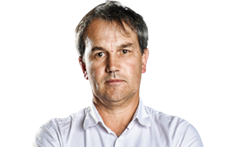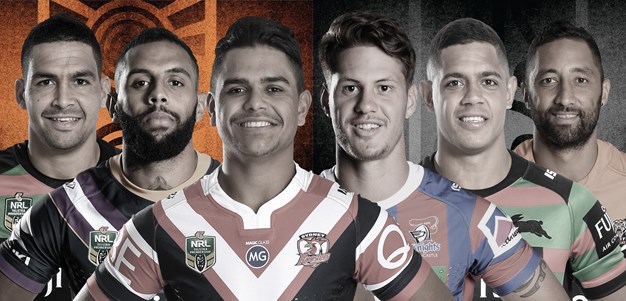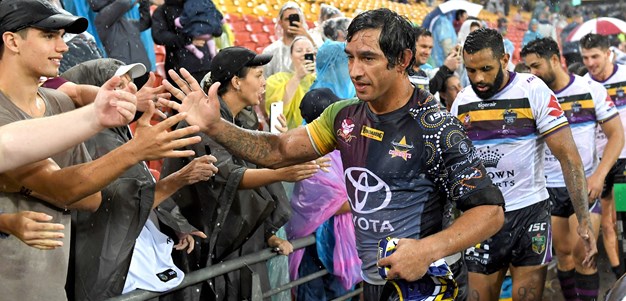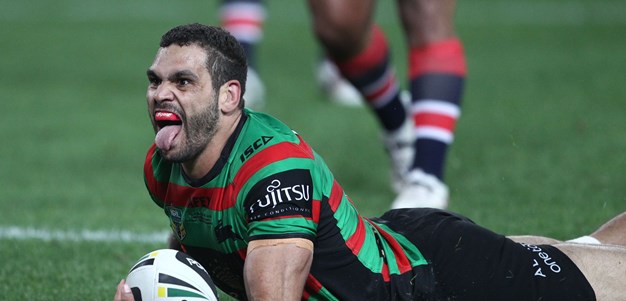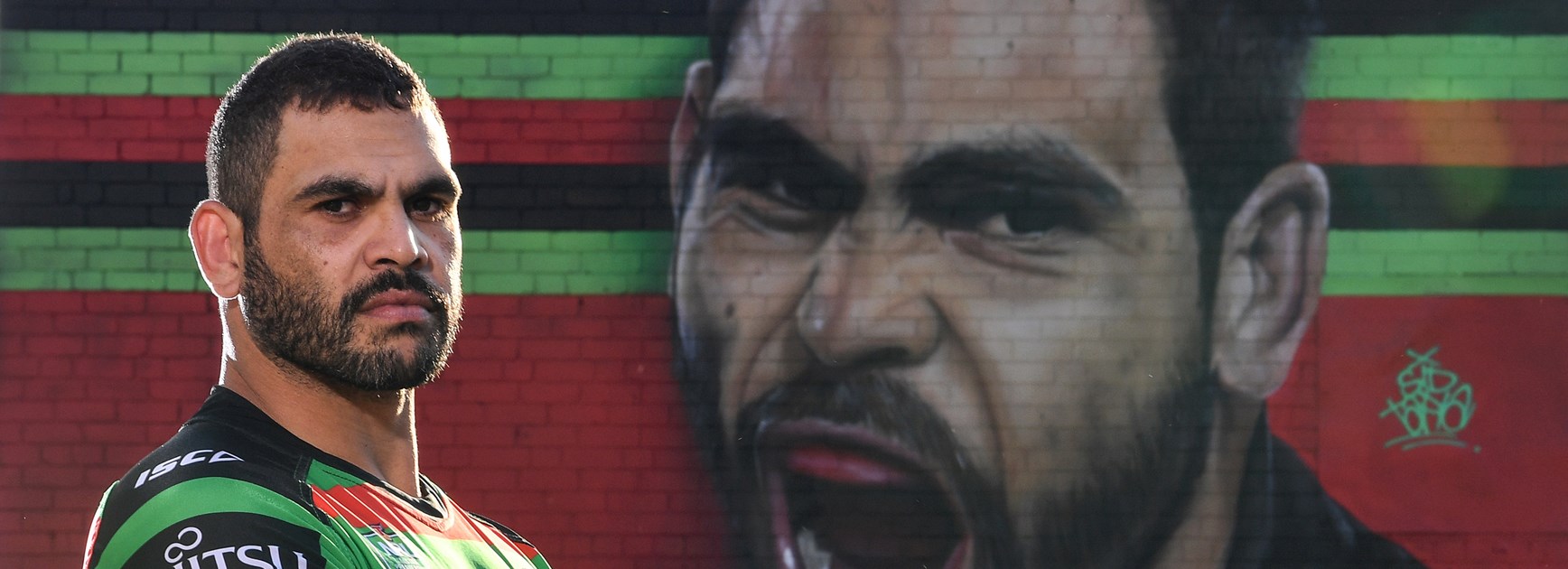
Greg Inglis has been compared to Arthur Beetson – and not just because of the freakish skills which made him one of the game’s greatest players.
While Peter O’Sullivan, who recruited Inglis to Melbourne, describes him as the "most gifted athlete" he has seen, the teenager who only needed half a season to win the 2005 Queensland Cup player of the year also developed into a leader during his 15 seasons with the Storm and Rabbitohs.
Inglis was an influential figure in the establishment of the NRL All Stars game and at Indigenous player camps it is noticeable during discussions how much the likes of Braidon Burns and Tyrone Peachey respect him and look to him for guidance.
Not just recently, but since the inception of the Indigenous player camps as part of the NRL’s 2008 Reconciliation Action Plan.
"In respect to all the boys he is the one who has probably had a presence like Artie Beetson or Preston Campbell," NRL Indigenous pathways manager Dean Widders said.
"He doesn’t say much, he sits and listens for a long time and he waits and picks his moment right at the end. It is like all the boys just toe the line with whatever he says and that is what he has earned because of his status in the game, and his power as a person.
Greenberg reacts to Inglis' retirement
"I haven’t seen that since Artie Beetson. Whatever Beetso said, in no matter what room, everyone stopped and listened, and that was always the end of the conversation. No one ever spoke after him and Greg is like that.
"He is up there with Artie Beetson. In our community and among our young boys, there is no bigger compliment you could give anyone."
At South Sydney, Inglis was recognised as a leader long before he took over the captaincy from John Sutton in 2015, with the hosts of a welfare and education program telling officials they had thought he had been dis-engaged – until he spoke to teammates towards the end of the session.
Few players have the same presence as Inglis, who along with Johnathan Thurston helped Campbell to convince NRL clubs to back the All Stars concept in 2010.
After being unable to play in the Aboriginal Dreamtime team which hosted Aotearoa Maori in the curtain-raiser to the opening match of the 2008 World Cup because they were representing Australia in the main event, Inglis and Thurston told Campbell they wanted an opportunity to do so.
Inglis and Thurston spoke at a meeting of NRL club CEOs about why the All Stars match was so important to them before the concept was given the green light.
After joining the Rabbitohs in 2011, Inglis has been heavily involved in community work – promoting messages to the Indigenous community about quitting smoking, eating healthy, being active and staying at school.
The 32-year-old set an example to young players and members of the Indigenous community by becoming the first member of his family to attend university when he enrolled in a business degree at Sydney University.
Greg Inglis career highlights
ARL Commissioner Professor Megan Davis said: "As a Commissioner who is also a Cobble Cobble Aboriginal woman, I am sure I speak for the Indigenous community in saying we are so proud of Greg Inglis, a great Dunghutti man and we wish him well for the future.
"Greg is a giant of Australian sport and Australian rugby league, but for many Aboriginal and Torres Strait Islander young people, he impacted upon so many of our lives because he was one of us.
“We watched him grow through the game, through the good times and the bad times, to have an exemplary career as a NRL player, a Kangaroo, representing his mob in Indigenous All Stars and that most special of representative honours, a Queenslander.
"I single Origin out because rugby league played an emancipatory role for many Aboriginal men during the so-called protection era in Queensland and NSW.
"This is why the Koori and Murri rugby league carnivals are such an important part of the rugby league calendar. Rugby league is a part of our culture. Greg continued that long tradition.
"Greg stood up to racism and was proud of his culture. We shared a mentor in the great Rabbitohs supporter, Sol Bellear. Fairness and equality for our people and the Aboriginal movement has never been far from Greg Inglis’s heart.
"He carried all of us with him on the field, in the good times and bad, and we look forward to embracing him as he continues his impact upon the indigenous community in delivering a better future for our people."
Bellear, who was founding chairman of the Aboriginal Medical Service in Redfern and a member of the South Sydney board, played an instrumental role in Inglis joining the Rabbitohs after being squeezed out of Melbourne after the 2010 salary cap scandal.
He could have been lost to the AFL and was approached by Essendon after being forced to sleep on the couch of Souths GM of football Shane Richardson while waiting for the NRL to approve his contract.
However, Inglis has always been passionate about rugby league - as evidenced by his support for the Jillaroos and the women’s game.
Greg is a giant of Australian sport and Australian rugby league.
ARL Commission member Megan Davis
Before their 2013 World Cup triumph, Inglis went to Sydney airport to farewell the Jillaroos and ensure media attention for the Australian women’s team at a time when they were just happy the NRL was paying for their expenses in England for the first time.
Inglis also helped with some of the travel costs for an under 16s Indigenous team coached by the late Steve "Bear" Hall.
At the same age, he had been signed by the Storm after O’Sullivan spotted him at a NSW schools carnival in Port Macquarie.
Remarkably, no other NRL club had shown interest in him but O’Sullivan said that every year from 16 onwards he transformed from a skinny kid to one of the game’s greatest players.
Why Greg Inglis retired from the NRL
At the Storm, Craig Bellamy was so desperate to get him more involved in the game he once devised a plan for Inglis to switch to fullback in defence so he could return the ball if the opposition kicked on the last tackled, with Billy Slater defending in the front line.
After beginning his NRL career with Melbourne on the wing, Inglis moved to the centres and then fullback at Souths, while also winning the Clive Churchill Medal playing five-eighth for the Storm in the 2007 grand final.
Yet for all he achieved in the NRL and at Origin and Test level, the season that sticks in O’Sullivan’s mind was 2005 for Brisbane Norths, when he scored 18 tries and kicked 39 goals to win Queensland Cup player-of-the-year.
"He was a boy playing against men and it looked like a man playing against boys," O’Sullivan said.
"The QRL rang us and said he had to go to the end-of-year presentation and I said ‘no way, we are not going to fly him up there. He’d only played nine games’.
"He ended up getting 27 points and won player of the year. He played nine games and got man-of-the-match in every game. He is just clearly the most gifted athlete I have ever come across."
The views in this article do not necessarily express the opinions of the NRL, ARLC, NRL clubs or state associations.
